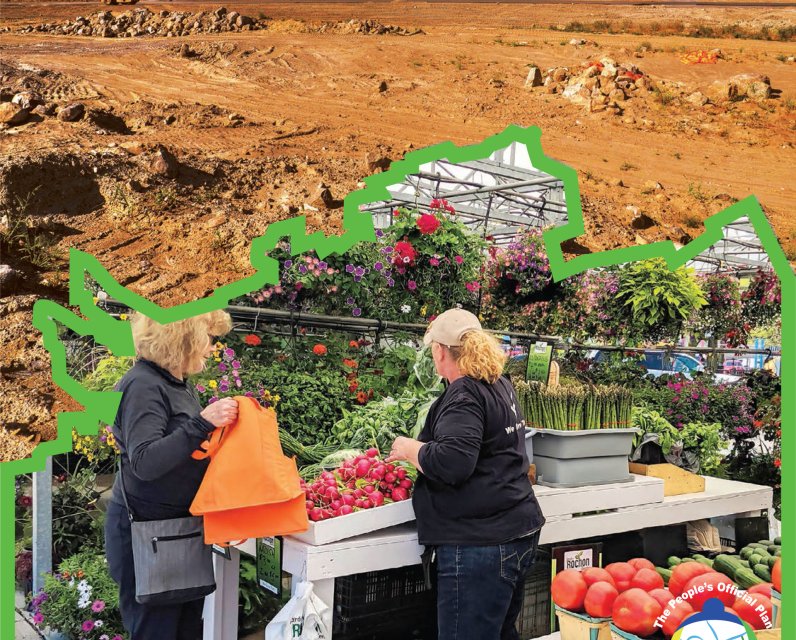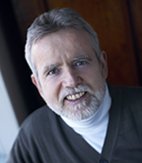Unpublished Opinions
Daniel Buckles is a resident of Kitchissippi Ward, and co-recipient of the 2020 Conservation Award from the Ottawa Field Naturalist Club for work to conserve Heritage Bur Oaks in the Champlain Park neighbourhood.
Dear Ottawa: Where will our food come from?

Where Will Our Food Come From?
A cow paddock in Riverside South, within the catchment area of two transit stations of the Phase II Light Rail System, will likely become a new subdivision due to a decision at a recent Joint Meeting of Planning and Agriculture and Rural Affairs. A motion from Councilor Scott Moffatt to keep the parcel as rural agricultural land, as recommended by City staff, was voted down in Committee by 11 councilors to 1. It fell without a mention of land use options other than houses, streets and cows.
The two sides of the debate were based on a clash of principles at the heart of the City’s new Official Plan: Intensification versus urban sprawl. On the one hand, if left to pasture or fields of industrial corn the 106 hectares surrounded by existing residential neighbourhoods would be a waste of the City’s future investment in LRT infrastructure. Paving it over forever would serve the greater good of public finances and intensification close to transit. On the other hand, leaving it out of the urban boundary would reaffirm the City’s commitment to protect farmland for future generations and constrain the outward expansion of residential development.
The Councilor’s motion was a bloodless text focused on fine tuning the technical assessment of the quality of the land, the so-called Land Evaluation and Area Review or LEAR score. It was a delaying tactic, perhaps, and a principled attempt to protect prime farmland, but failed to pass. The discussion prompted tempers to flare in what was otherwise a cooperative session for a joint committee tasked with refining the Official Plan before it goes to full Council on Wednesday, October 27.
What is lost, however, is hardly noticed at all: Where will our food come from when global supply chains are disrupted by the global climate crisis? While squaring the circle of intensification and urban sprawl is certainly complicated, where is the creativity and resolve needed to move beyond the obvious to solutions already on the edge of our awareness. This edge is the so-called “adjacent possible” coined by the eminent biologist Stuart Kaufmann to explain the possible origins of life and modern adaptive systems. The 106 hectares of deep fertile soils in Riverside South, surrounded by housing and services, represents hundreds of community gardens, dozens of market garden businesses, thousands of food producing fruit and nut trees, potential food processing businesses such as cider presses and food education and training centres along the lines of the 60 hectare Just Food Community Farm on NCC Greenbelt land within residential Blackburn Hamlet. The farm is on a major bus route. It shows the adjacent possible for Riverside South.
While this parcel of land is not likely to come up again at Council Wednesday, the Tewin example of urban expansion and calls from the housing industry to expand even more or face higher housing prices undoubtedly will. Both are urban sprawl writ large and neither offer any real solution to the housing and homelessness emergency. As noted by some, arguments for expansion oversimplify the complex interaction of forces driving housing affordability – inflation above wage increases, construction costs above inflation, baby boomers aging in place, and policies intent on putting most of our growing population into the inner city rather than spreading intensification out across all urban neighbourhoods and rural communities.
Discussion at Council will likely simply reproduce the polarization that has long characterized city politics: developers versus residents, urban sprawl versus mammoth apartment towers, the dream of a backyard versus a liveable place in the city, nature versus people. It should, however, rise above the fray of artificially polarized choices and show true leadership, not by claiming to strike some vague balance between developer and resident influence but rather in clarity of public purpose and creativity in solutions.
Daniel Buckles, Adjunct Professor, Carleton University, and co-animator of the People’s Official Plan (www.ottawaclimatesolutions.net).



Comments
Be the first to comment